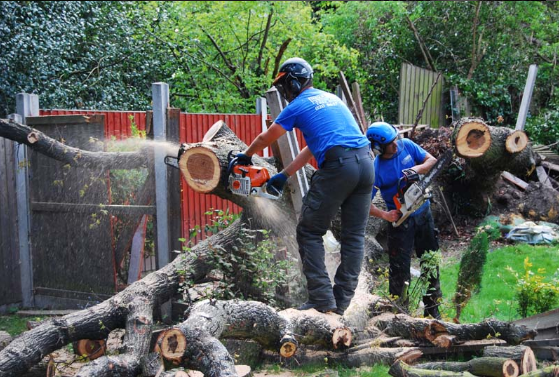Introduction
When it comes to cultivating fruit trees, the art of pruning is paramount. Proper pruning techniques can significantly enhance your yield, improve the health of your trees, and facilitate easier tree care. This article delves into the various pruning techniques for fruit trees that not only maximize your harvest but also ensure long-term vitality for your plants. We will explore essential practices, tools, timings, and common mistakes to avoid. Whether you're a novice gardener or an experienced horticulturist, understanding these techniques will elevate your fruit-growing endeavors.
Pruning Techniques for Fruit Trees: Maximizing Your Harvest
To effectively maximize the harvest from your fruit trees, you need to master several key pruning techniques. These practices help in shaping the tree for better sunlight exposure, air circulation, and nutrient absorption. Here’s a deeper dive into what makes these techniques effective.
Understanding Why Pruning is Essential
Pruning is more than just cutting branches; it’s about maintaining the health of the tree and optimizing its fruit production. Here are a few reasons why pruning is vital:
Encourages New Growth: By removing dead or diseased wood, you stimulate new growth. Improves Air Circulation: Thinning out crowded branches allows better airflow. Enhances Sunlight Penetration: A well-pruned tree receives more light, which is crucial for photosynthesis. Shapes the Tree: Maintaining a specific shape helps manage tree size and facilitates harvesting.
Choosing the Right Time to Prune
Timing can make all the difference when it comes to effective pruning. So when's the best time? Generally, late winter or early spring before new growth begins is ideal. However, different types of fruit trees may have varying requirements.
Spring vs. Winter Pruning
- Winter Pruning: Ideal for deciduous trees as they are dormant. Easier to see branch structure without foliage. Spring Pruning: Best for minor adjustments post-flowering. Helps control growth after potential frost damage.
Tools You Will Need
Having the right tools makes a world of difference in executing effective pruning techniques:
| Tool | Purpose | |----------------------|-----------------------------------------| | Loppers | For cutting thicker branches | | Hand pruners | For smaller branches | | Saws | For larger limbs | | Rubbing Alcohol | To disinfect tools |
Basic Pruning Techniques
Now that you know why and when to prune let’s dive into some essential techniques:
Thinning Cuts
This technique involves removing entire branches back to their point of origin. This promotes air circulation and reduces competition among limbs.
Heading Cuts
A heading cut removes part of a branch but leaves it attached to stimulate growth in lateral buds.
Crown Reduction
For overgrown trees, crown reduction helps lower their height while maintaining a natural shape.
Advanced Pruning Techniques
As you become more confident in basic techniques, consider incorporating advanced methods such as:
Espalier: Training trees against a wall or fence for space-saving benefits. Pollarding: A severe form of pruning that encourages dense foliage at specific heights.Common Mistakes to Avoid When Pruning Fruit Trees
Even seasoned gardeners can make mistakes during pruning. Here are some pitfalls to watch out for:
- Not sterilizing tools can spread disease. Over-pruning can stress out the tree. Ignoring branch angles; aim for wide angles (greater than 45 degrees) for stronger growth.
Specific Types of Fruit Trees and Their Pruning Needs
Different fruit species require unique approaches when it comes to pruning techniques:
Apple Trees: The Art of Apple Tree Pruning
Apple trees benefit from yearly maintenance that includes:
Removing suckers from the base. Thinning fruits to prevent overcrowding. Ensuring central leaders have ample space.Peach Trees: Optimizing Peach Production Through Pruning
Peach trees require more aggressive pruning due to their rapid growth rates:
Focus on outward-facing buds during springtime. Remove one-third of last year’s growth annually.Citrus Trees: Special Considerations in Citrus Tree Care
Citrus trees often thrive with minimal intervention but still require attention:
Regularly remove dead or damaged wood. Light annual thinning helps maintain shape without affecting yield.Tree Care Information Post-Pruning
After you've pruned your fruit trees using these techniques, proper care is essential for recovery and growth:
Watering After Pruning
Adequate watering post-prune ensures hydration but avoid overwatering as roots might be stressed from cuts.
Fertilization Practices Post-Prune
Using organic fertilizers post-prune provides nutrients that support healing and encourages robust regrowth.
FAQs on Pruning Techniques
1. What happens if I don't prune my fruit trees?
Not pruning can lead to overcrowded branches which hinder sunlight access and air circulation, resulting in reduced yields and increased disease susceptibility.
2. Can I prune my fruit trees year-round?
While light maintenance can occur throughout the year, significant pruning should generally be confined to late winter or early spring when trees are dormant.
3. What tools do I need for effective tree trimming?
Essential tools include loppers for thick branches, hand pruners for smaller ones, saws for larger cuts, and rubbing alcohol for tool disinfection.
4. Should I seal cuts after pruning?
Sealing cuts was once common practice; however, modern advice suggests letting nature heal without seals unless large cuts are involved where decay could set in.
5. How often should I prune my fruit trees?
Annual maintenance is recommended; however, some fast-growing varieties may require biannual checks—observe each tree’s growth pattern closely!
6. Is there a wrong way to prune my fruit trees?
Yes! Poor technique can lead to disease transmission or stunted growth—always educate yourself on specific needs per species!

Conclusion
In conclusion, mastering pruning techniques for fruit tree removal trees not only maximizes your harvest but also contributes significantly to overall plant health and longevity. By understanding when and how to prune effectively—utilizing proper tools—you pave the way towards thriving orchards laden with luscious fruits ready for harvest season! As you delve deeper into this art form, remember that patience is vital; every snip counts toward creating something beautiful—a bountiful garden awaits! Happy gardening!